- Call us: 01444 237070
- Contact Us
- Stores
- Sign In / Register
-
- Back
- Used Cameras
- Used Lenses
- Used Video
- Used Film Equipment
- Used Stock Alert
- Used Blank Test
- Sell or Part Exchange
- Used Accessories
- Recently Added Used Equipment
- Used Clearance
- Faulty
- Park Picks
- Trade-In
- Blog
- New in
- Call us
- Contact us
- Stores
- Sign in
- Categories
- Tips & Inspiration
- Reviews
- News
- Events
- Features
- Buying Guides
- Competitions
Rule of thirds in Photography
In this introduction to the rule of thirds in photography, we explore this fundamental composition principle so that you can easily apply it to instantly improve image compositions. You'll learn what the Rule of thirds is and why it's a crucial tool for photographers, especially beginners just starting out.

Combining leading lines with the rule of thirds in a landscape photo Image ©Nick Dautlich
Learn about its application through examples, delve into when it's most effective, and when it's fine to break this rule. Understanding the Rule of thirds is more than a guideline; it's a stepping stone towards mastering composition, enhancing your creativity, and developing a photographic style of your own. Join us as we unravel the basics and nuances of this essential photographic technique.
Video tutorial
Watch Gareth’s video as he walks through the rule, about making a deliberate choice in your images and how to use the rule to improve your shots.
History of the rule of thirds
The rule of thirds has its roots in classical art and has evolved over centuries into a fundamental principle in composition. Originally it was used by artists to create balanced and aesthetically pleasing paintings. In photography, this rule became a cornerstone of composition, helping photographers frame their shots in naturally appealing ways.
The Rule of thirds places the subject in a way that draws the viewer's attention and creates harmonious balance within the frame, and this principle continues to influence photography and other visual arts to this day.

Placing the subject on the intersection of the lines helps create order Image ©Nick Dautlich
Psychology Behind the Rule
The Rule of thirds is psychologically appealing because it aligns with how humans naturally view images. Our eyes are drawn to intersection points rather than the centre of a frame, making images that adhere to this rule more natural and engaging.
The principle mimics a natural scanning process of the human eye, providing a more comfortable and harmonious viewing experience. The Rule of thirds also creates a sense of balance and structure in a composition, which satisfies our innate preference for order and symmetry in visual elements.
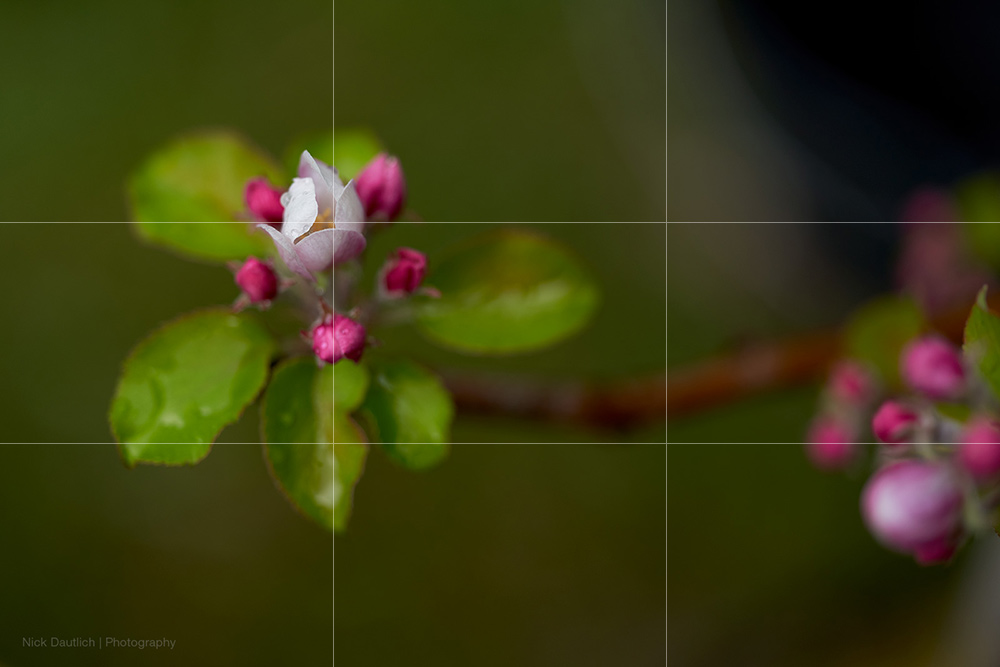
Placing the blossom on the intersection of the lines helps create order Image and space ©Nick Dautlich
What is rule of thirds in photography?
The Rule of thirds in photography is a fundamental compositional guideline that divides the frame into nine equal segments with two equally spaced horizontal lines and two vertical lines, to create four intersection points. The rule suggests placing the most important elements in your scene along these lines, or at their intersections.
It's a guideline that helps photographers to achieve a balanced and visually appealing composition by placing elements of the photo in a way that is pleasing to the eye.

Even in close-up and macro photography you can employ the rule of thirds
Using the rule of thirds in different genres
The photography rule of thirds is versatile, and can be applied across any photographic genres. In landscapes, it helps position horizons and scenic features, creating depth and interest. In portrait photography, it is used to position subjects, steering the viewers’ focus on their expressions or personality. Street photography benefits from its order, framing candid moments within urban landscapes.
Even in macro photography, the rule aids in highlighting intricate details against a composed background. Each genre utilises the Rule of thirds differently, adapting it to highlight the genre's unique elements and creating visually compelling images.
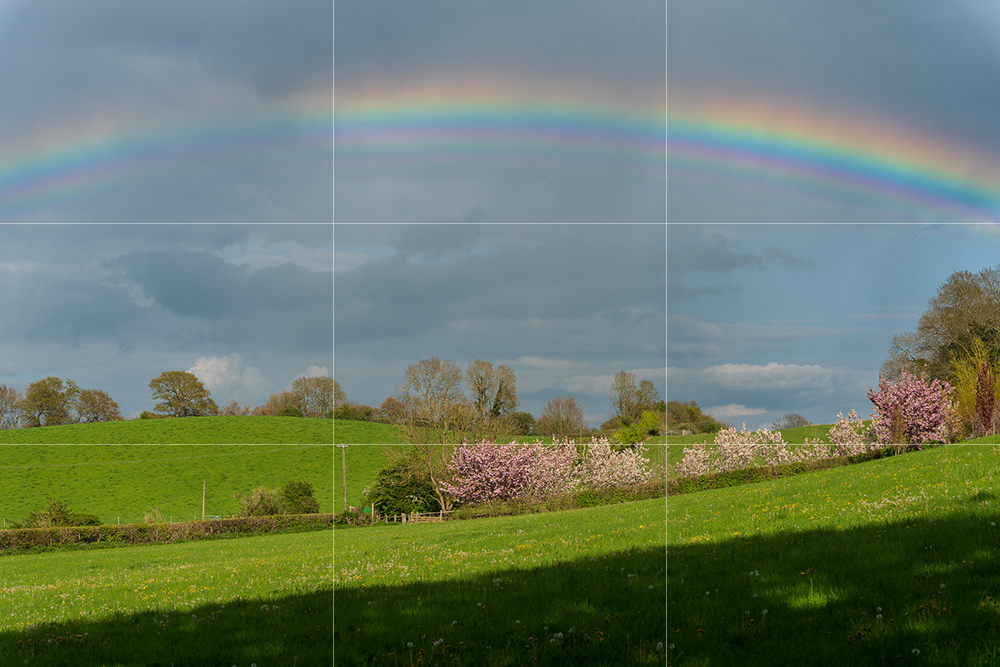
Using the rule for landscape photography to avoid centering the horizon Image ©Nick Dautlich
Why do people like the rule?
People often favour the rule of thirds due to its simplicity and effectiveness in enhancing a photo's visual appeal. It provides a straightforward guideline for framing and composing shots, making it easier to create balanced, engaging images, especially where there appears to be chaos in front of you.
The rule helps in placing subjects or elements, leading to more dynamic and interesting compositions. It's particularly appreciated for its ability to guide the viewer’s eye naturally through the image and for adding depth and interest without overwhelming the viewer. Consequently, it's a widely embraced tool for both beginners and experienced photographers to improve the composition of their shots.

Owl placed onto the line intersections Image ©Nick Dautlich
When using the rule what will first need to do?
When using the Rule of thirds, the first step is to visualise or enable the grid in your camera's viewfinder or screen. This grid divides the frame into nine equal parts with two horizontal and two vertical lines, guiding the placement of key elements as you compose the shot.
Position your subject or important elements at the intersections or along these lines. This placement helps to create the balance which we are after. It's all about understanding the scene and determining the best spots within the grid to place your subject for maximum impact.
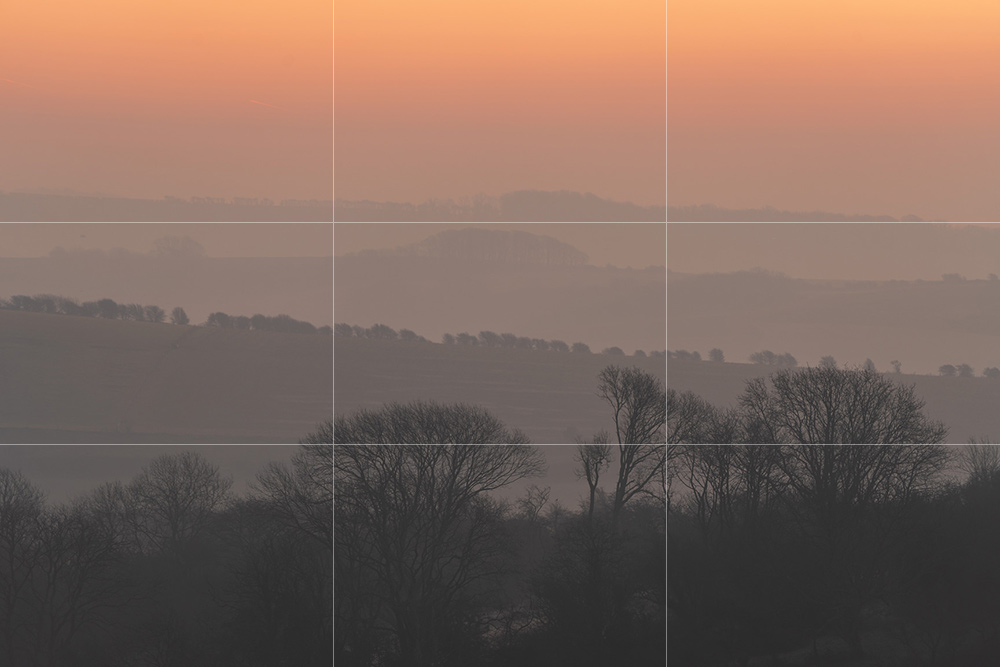
Creating layering with the rule of thirds for this landscape photo Image ©Nick Dautlich
Balancing the rule of thirds with other techniques
Balancing the Rule of thirds with other composition techniques enhances the visual impact of your photos even further. For example, combining it with leading lines draws the viewer's eye towards the main subject. Using negative space along with the rule of thirds can create a minimalist, yet powerful image.
Understanding when to use these techniques together depends on the context of the scene, but it can create more dynamic, interesting, and layered compositions in your photography.
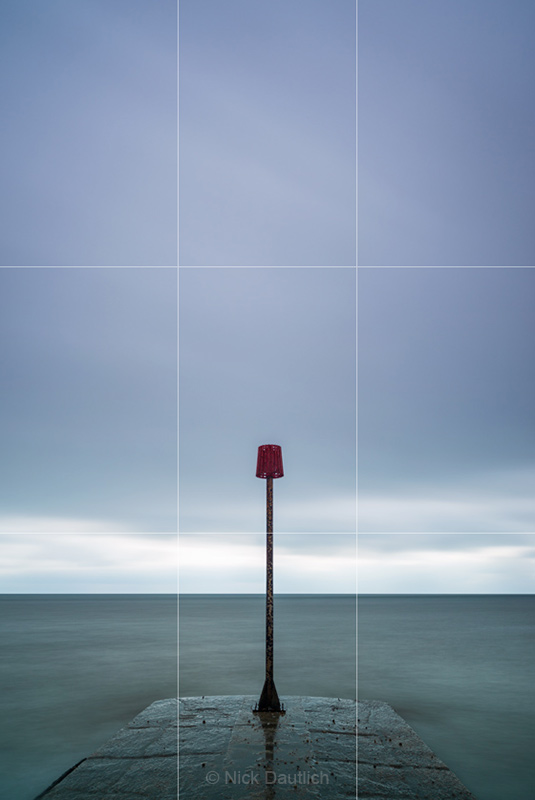
Bending the rule in vertical orientation to create space and tension Image ©Nick Dautlich
Portrait vs landscape orientation
The rule of thirds in photography applies slightly differently in portrait and landscape orientations. In portrait orientation, it's often used to emphasise height and vertical elements, guiding the eye along the frame's length. In landscape orientation, it's more about breadth and width, ideal for capturing expansive scenes.
The orientation chosen can affect the photo's storytelling, with portrait offering a more focused, intimate view and landscape providing a broader, more encompassing perspective. Adapting the rule to these orientations enhances your narrative power and the visual appeal of the image.
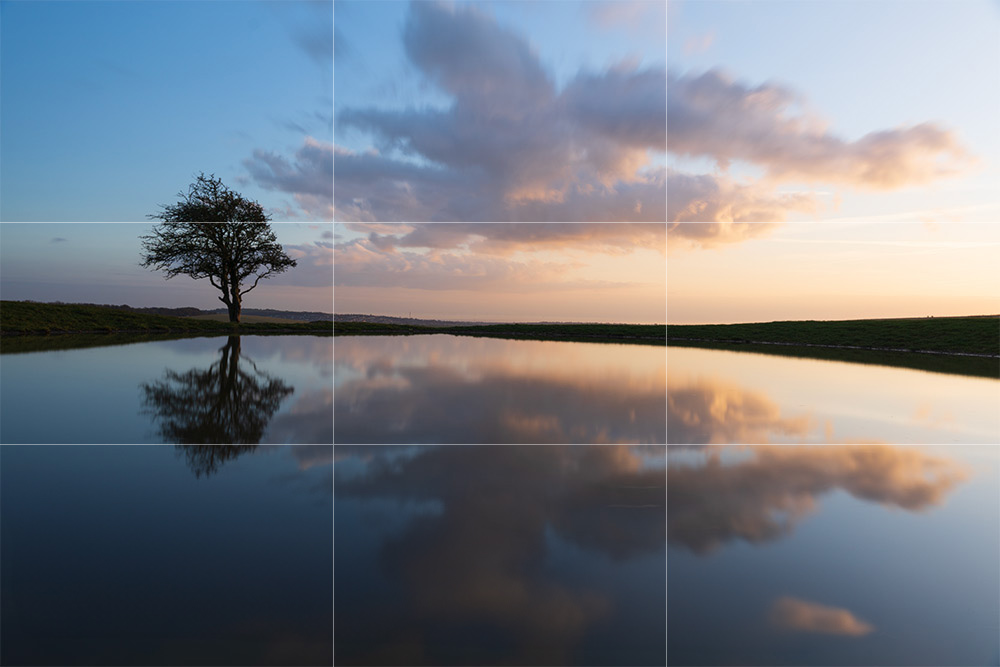
Long exposure photo applying the rule, while accommodating the scene at hand
How do I get grid lines on my camera?
To enable grid lines on most digital cameras, access the menu and navigate to its display or viewfinder settings. Look for an option named 'Grid Display,' 'Grid Lines,' or something similar. Once found, select this option to activate the grid on your camera's screen or viewfinder, which will overlay the rule of thirds grid.
The exact steps can vary depending on the specific camera model, so you may have to consult the user manual for specific instructions, if you're unable to locate the setting easily.
Famous photos which use the rule of thirds
Famous examples of rule of thirds photography can be found in iconic images by renowned photographers. Although renowned for saying there are no rules in photography, Ansel Adams' landscape photographs often use this rule for composing breathtaking natural scenes.
Steve McCurry's Afghan Girl, featured in National Geographic, is another classic example, with the subject's eyes aligned with the top horizontal line, capturing compelling emotion. These two rule of thirds photography examples showcase how effectively it can be used to create striking, memorable compositions, balancing elements in the frame to draw the viewer's attention to the photograph's focal points.
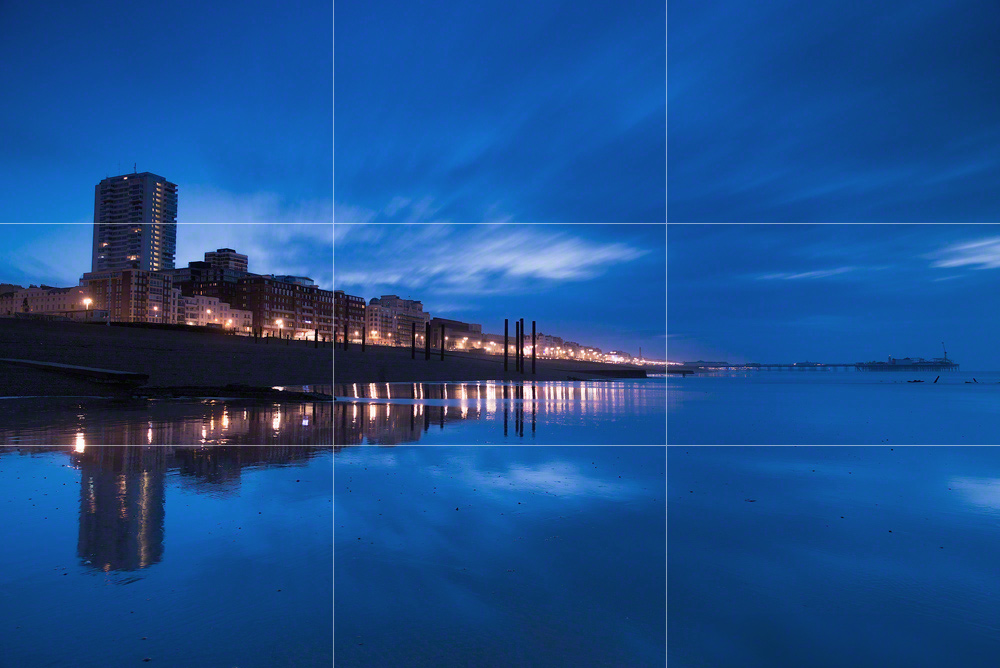
Breaking the rule by centering the main elements Image ©Nick Dautlich
Is it ok to break the rule of thirds?
Yes, breaking the rule is not only acceptable, but advisable in many situations, as it can lead to more creative and compelling compositions. This rule serves as a guideline, not a strict mandate, and deviating from it can result in unique, or unconventional images that convey a different mood or narrative.
Sometimes centering the subject or placing it away from the grid lines can add impact or tell a different story. It's important to understand the rule and its principles in the first place, but also to recognise when breaking it can enhance the end photo.
Despite being easy to grips with, the rule of thirds in photography is a powerful tool for photographers to place elements of a frame into an organised and appealing way. Your camera will have gridlines to aid when composing, and you can break the rule whenever you like, as long as you’re making a conscious choice to use a different technique.
We hope you found these photography tips useful and enjoy putting them into practice. Let us know how you get on through our social channels on Facebook, X and Instagram.
Share this post:
By Nick Dautlich on 08/01/2024

Trade in your old equipment
Fast and easy trade in service ensures your old gear is collected efficiently and you are paid quickly! It's very simple to trade in your unwanted photography gear. Just head over to our dedicated Sell or Part Exchange page, fill out the details, and we'll get back to you with an offer for your old gear. Take the cash, or put it towards the cost of your new gear. It's up to you! Find out more
sign up to the newsletter
Keep up to date on the latest photography news, events and offers. Sign up now
